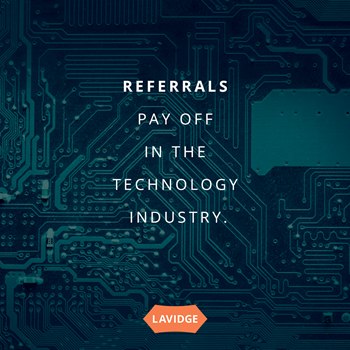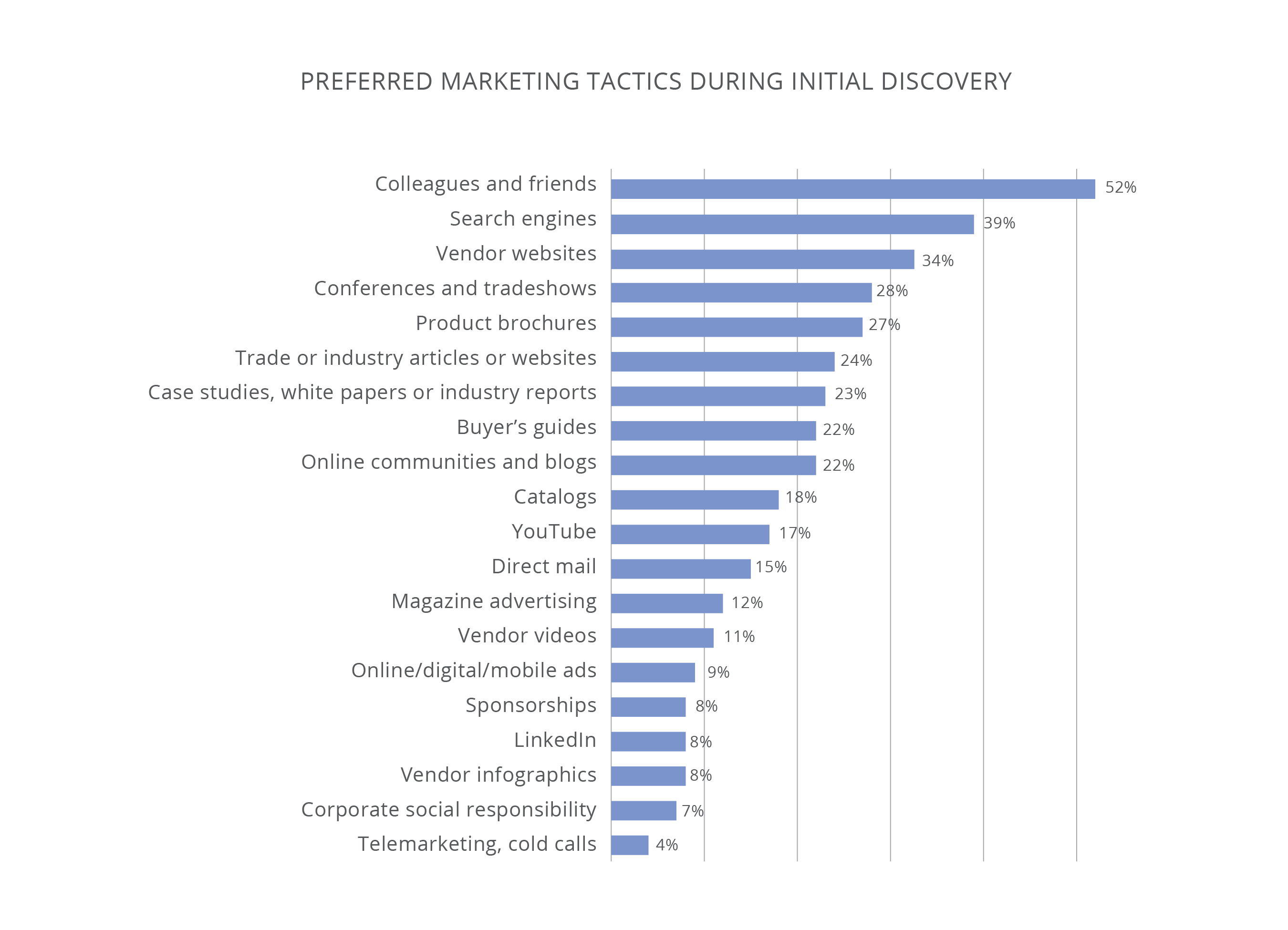Sign up for our LAVY email
and get our bi-monthly newsletter.
This article is a brief abstract of our exclusive study that takes the guesswork
out of technology advertising and marketing.
Download the complete 2017 U.S. Technology Industry Marketing Report
Game show contestants do it. Everyday consumers do it. And, thanks to our marketing research, we now know that enterprise technology buyers prefer to “phone a friend” before making the $10,000 or $1 million decision to invest in your products or services. Asking a friend in today’s connected world can take place through text message, email, social media, an actual phone call—or even face to face. The method is less important. The information communicated is paramount.

In fact, the data shows that organizations in search of technology follow a process similar to when individuals make purchases for themselves—they consult a colleague or friend. A Nielsen® Harris Poll®, conducted in 2016 on behalf of Business 2 Community, showed 82% of Americans seek recommendations before making any purchase. At 52%, more than half of technology buyers surveyed on behalf of LAVIDGE also reported referrals as being their preferred source of information during the initial discovery phase.
The larger the budget, the more likely the decision-maker is to reach out for a warm lifeline. The Harris Poll showed an uptick of 4 percentage points among personal consumers in households earning more than $100,000. Our survey revealed a 7 percentage-point increase above the overall average in reliance on colleagues and friends among companies with more than $10 million in annual revenue from 52% to 59%.
Clearly, whether a targeted technology customer is at the personal or enterprise level, referrals make a significant impact on lead generation. While some referrals will take place organically, technology marketers can put this insight to work by finding ways to encourage referrals with a referral program.
Bomgar™, Google® and IBM® successfully put such programs into action. Bombgar, a B2B remote-access technical support service, created a social community where happy customers could earn rewards by becoming active advocates or influencers to help Bomgar grow. Google offered G Suite™ users up to $1,500 for every business referred who adopted it for themselves. IBM promised increased results for those who recommended IBM software as a service (SaaS) or platforms as a service (PaaS) in addition to opening the door to a long-term relationship with the tech giant. Reaching out to those who needed a nudge to join the conversation helped each of these tech companies leverage influencer marketing to capture warm referrals they otherwise might have missed.


Not everyone turns to direct human sources for referrals. Search engines ranked second overall with 39% of survey responders overall noting it as their preferred marketing interaction during the initial discovery. The larger the business, the more search engines came into play. Small businesses ranked them at 34.5% and larger businesses with more than $10 million in annual revenue ranked search engines at 50.5%.
By the consideration phase, search engines ranked nearly equally among businesses based on size with an overall average 21.3%. Slightly more variations came into play with females expressing 16.8% preference and males 25.4%, and those under 35 years of age indicating 22.4 percent preference compared to those aged 35 to 54 at 27%.
At 34%, vendor websites ranked third overall. Deploying a combination of paid and organic search engine marketing efforts will drive technology shoppers to paid campaign landing pages and the website home page. Optimizing for user experience (UX) will help those visitors engage once they hit your site. When potential clients can find what they need with ease (UI), a higher conversion rate logically follows.
Financial differentiation in potential benefit between optimizing for traffic or UX varies by brand, and can best be determined by testing each. In any case, having a strong interactive marketing strategy in place benefits these customer profiles as well as those whose journeys began with a warm referral. Ideally, when the conversation between friends progresses to online research, a well-planned B2B tech sales funnel is ready to greet them, every step of the way.


This article is a brief abstract of our exclusive and authoritative study that takes the guesswork out of marketing technology to businesses. Rather than speculating about what will drive B2B technology buyers to action, we've asked them.
Sign up for our LAVY email
and get our bi-monthly newsletter.